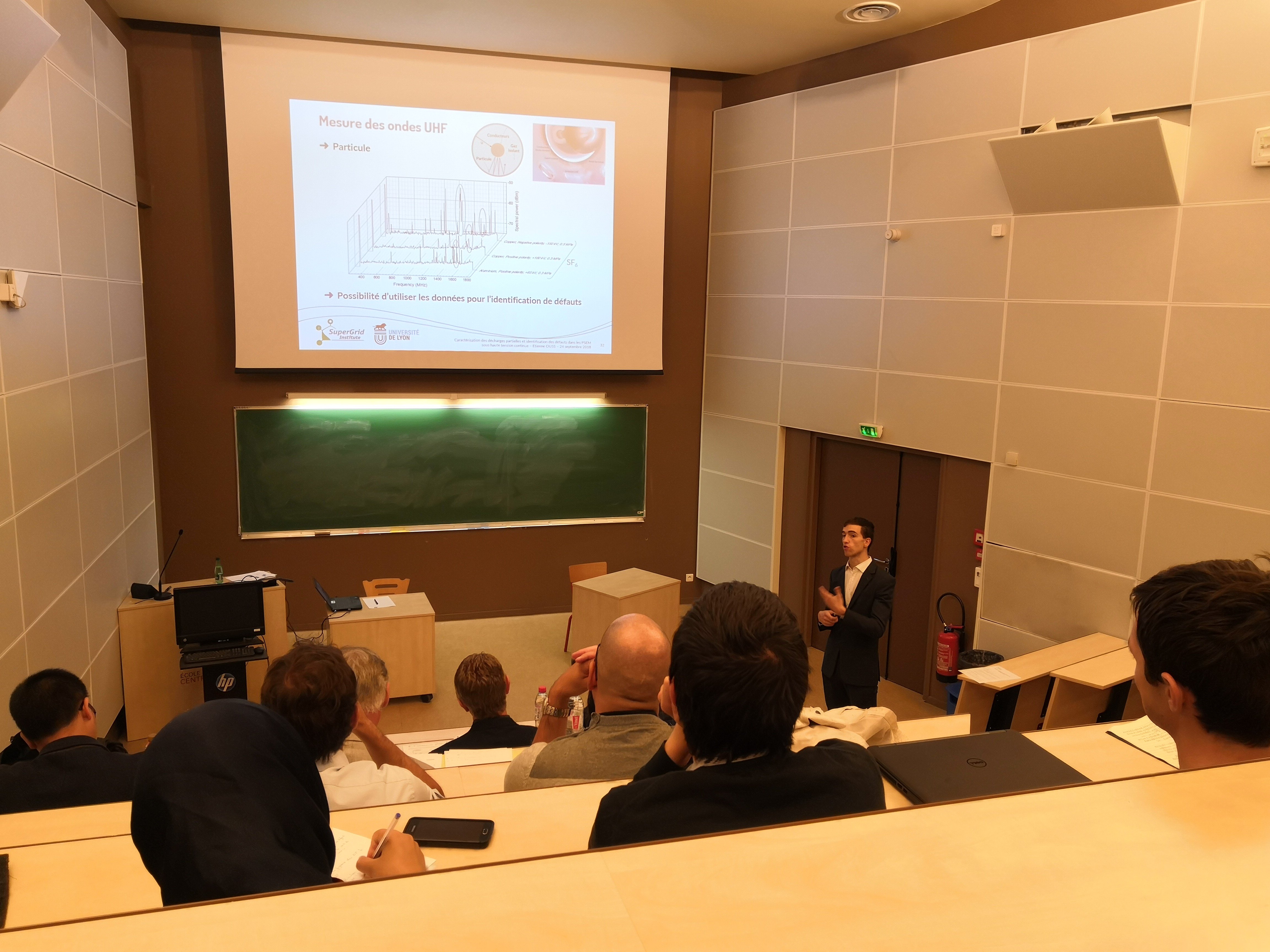PhD Etienne OUSS
“Characterization of Partial Discharges and Defect Identification in High-Voltage Direct Current GIS”

Abstract
The framework of this thesis is the monitoring of High-Voltage, Direct Current (HVDC) Gas Insulated Substations (GIS). The availability of these equipment is crucial for electrical networks operators. That is why they need a preventive diagnosis tool. The solution must be able to detect and identify the insulation defects, so that an appropriate maintenance can be planned. The last 40 years have seen Partial Discharges (PD) measurement become a classic monitoring tool for AC GIS. Unfortunately, there is a lack of scientific information about PD in HVDC GIS, and the known defect identification techniques are very specific to the AC environment. New techniques are thus needed in DC.
This thesis aimed to characterize partial discharges in DC gas-insulated substations, and to develop an automatic defect identification tool. The first step of this work was the development of a partial discharge measuring bench. The complete study has been performed in a GIS section, so that the results can be directly applied to industrial equipment. Two kinds of defect have been investigated: protrusions on the high-voltage conductor, and free metallic particles. The influence of parameters such as gas nature and pressure, voltage level and polarity has been evaluated. First, PD have been measured in conformity with the IEC 60270 standard, and the relevance of this method in a DC environment has been evaluated. Then, other measuring chains have been used to improve the characterization of partial discharges: a steady-state current measurement, a high-frequency current measurement, a light measurement and a measurement of Ultra-High Frequency (UHF) waves. Finally, a relevant signature for defect identification has been designed and extracted from DP recordings. A database has been constituted, and an automated recognition algorithm has been implemented.
The results show that the conventional PD measurement technique is not fully adapted to partial discharges detection in DC, corona discharges being the most problematic situation. Nevertheless, this method has brought enough information to start the characterization of PD. The limitations of the conventional method have been explained thanks to the results of the other measurements. These other experimental results have led to an actual improvement of the characterization of protrusion and particle-generated partial discharges. An effective automated defect classification solution has been implemented. The signature is derived from the q(Δt) diagram that has been extracted from the data obtained with the partial discharge conventional measurement. The identification algorithm has a neural
network structure.
Keywords
Gas-Insulated Substation (GIS), Direct Current (DC), Partial Discharge (PD), Gas, Defect, Protrusion, Particle, Pressure, Identification, Neural Network, IEC 60270, UHF.


